Chapter 6.2: Painting
Painting is a specialized form of drawing that refers to using brushes to apply colored liquids to a support, usually canvas or paper, but sometimes wooden panels, metal plates, and walls. For example, Leonardo da Vinci painted Mona Lisa on a wood panel (Figure 1). Paint is composed of three main ingredients: pigments, binders, and solvents. The colored pigments are suspended in a sticky binder in order to apply them and make them adhere to the support. Solvents dissolve the binder in order to remove it but can also be used in smaller quantities to make paint more fluid.
As with drawing, different kinds of painting have mostly to do with the material that is being used. Oil, acrylic, watercolor, encaustic, fresco, and tempera are some of the different kinds of painting. For the most part, the pigments or coloring agents in paints remain the same. The thing that distinguishes one kind of painting from another is the binder.
Painting is the best-known of all mediums for creating two-dimensional works of art. Within painting, Oil has been a favorite to artists since its “discovery” in the early 1400s. In fact, if you ask most people in the street to think of a work of art, the great majority will automatically think of an oil painting. Much like in drawing, paint is created when pigments and a medium, or binder, are mixed and applied on a surface or support. The type of medium will give us the name of the painting technique. Pigment mixed with oil will give us oil painting, while pigment mixed with molten beeswax will give us encaustic. The first painting techniques that appear in history are linked to readily available materials and tools, and we will explore them in the upcoming sections.
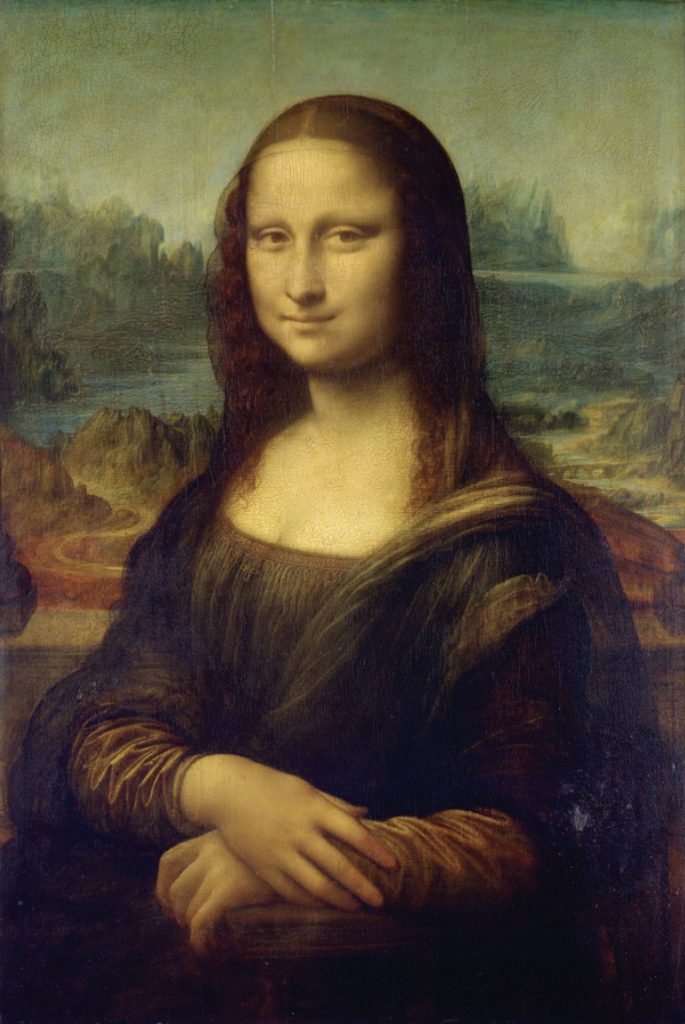
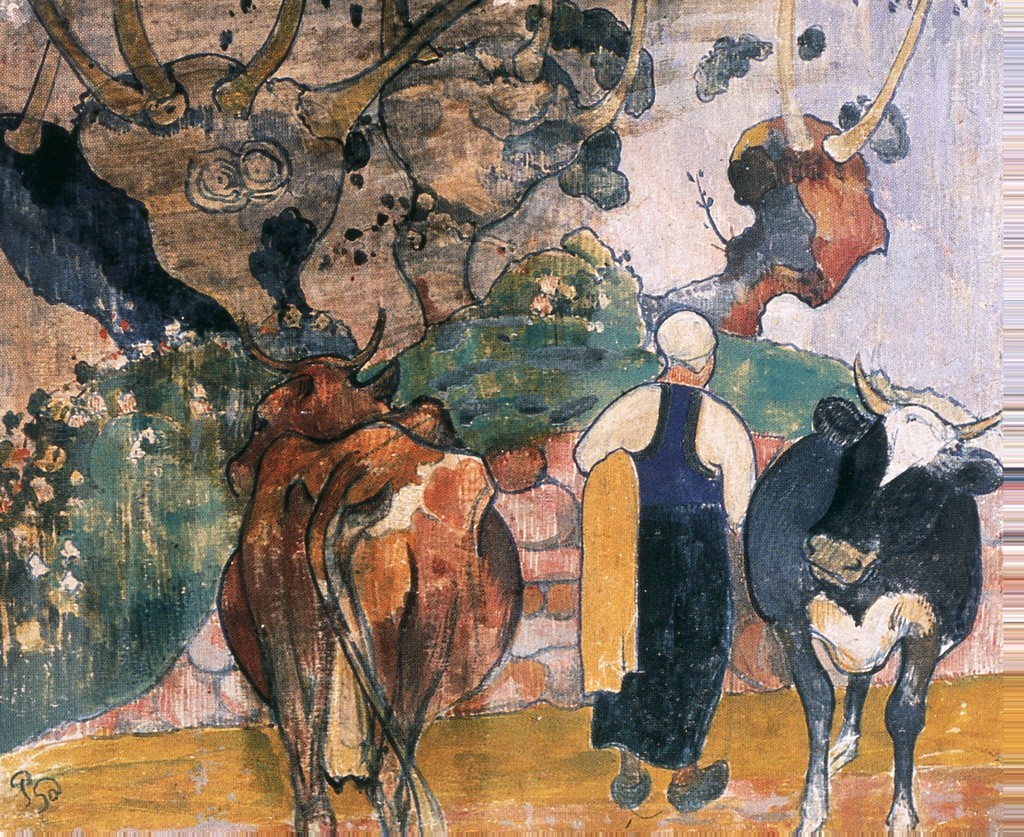
Painting Materials
You had a chance to learn more about pigments in our last video. The availability of different types of pigments define the “look” of works from certain eras. For example, the intense colors pigments of produced by the furnaces of the Industrial Revolution in the early 1800s gave us the intense mars, cobalts and quinacridones; these were not available to the painters of the Renaissance, who had to rely on naturally derived pigments.
There are two types of supports:
- Flexible
- Rigid
Flexible support is a surface that can bend without breaking. Parchment, canvas and paper, can bend without affecting the paint. Rigid supports are surfaces that do not bend. Most used rigid supports are board or plaster, they are inherently unmovable. Oftentimes, a mineral layer will be added on the Support to separate them from the paint (pigment + medium). We call this mineral layer a ground, and is used in some techniques, out of the necessity to slightly separate organic compounds that would rot. The most commonly used ground is gesso. “Gesso,” also known “glue gesso” or “Italian gesso” is a traditional mix of an animal glue binder (usually rabbit-skin glue), chalk, and white pigment, used to coat rigid surfaces such as wooden painting panels and canvas. In modern times, “acrylic gesso” is a widely used ground that is a combination of calcium carbonate with an acrylic polymer medium latex, a pigment and other chemicals that ensure flexibility, and increase archival life.
Painting Techniques: Watercolor
Watercolor painting suspends colored pigments in water-soluble gum arabic distilled from the Acacia tree as the binder. Watercolor paints are mixed with water and brushed onto an absorbent surface, usually paper. Before the industrial era, watercolor was used as an outdoor sketching medium because it was more portable than oil paint, which had to be prepared for use and could not be preserved for long periods or easily transported (Figure 3). Today, however, many artists use watercolor as their primary medium.
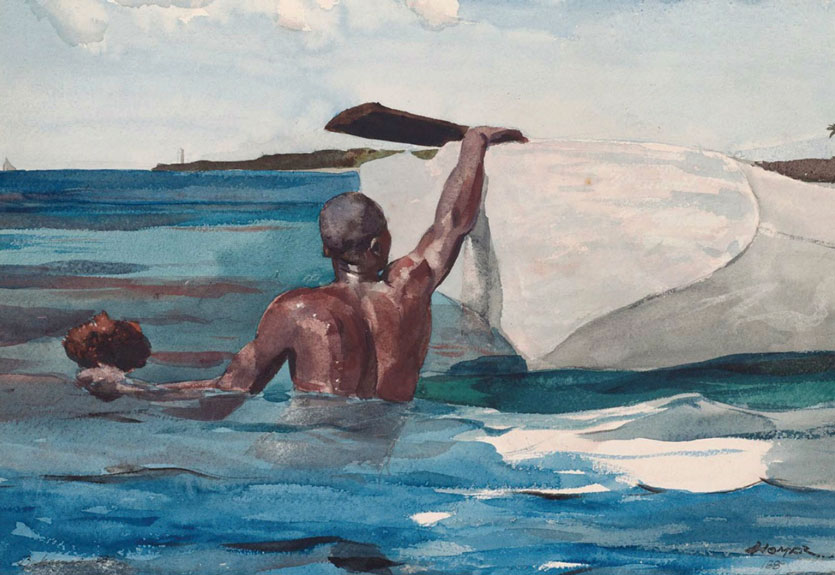
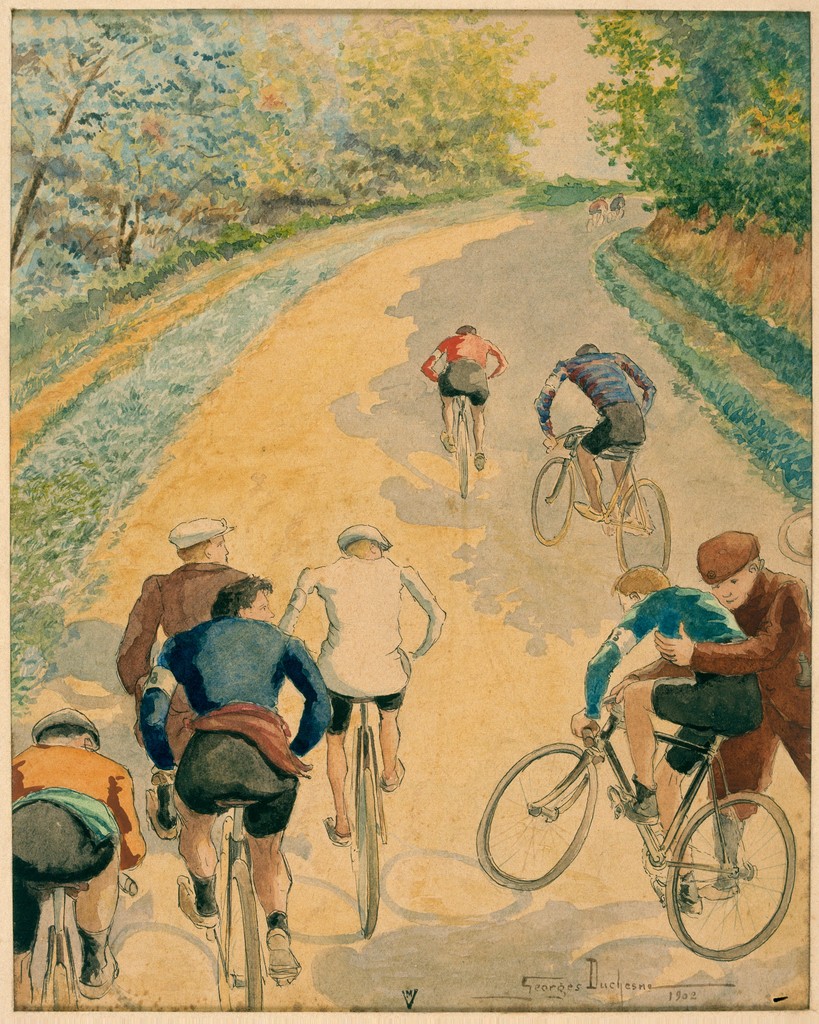
The earliest watercolors mixed pigment with water and gum arabic. Gum Arabic comes from the gum of an acacia tree in northern Africa and was discovered as a mild water-soluble binder by the Egyptians. We see Egyptians using early watercolor paint on papyrus and plaster. The traditional and most common support is paper, but it can also be laid on plastics, vellum, leather, fabric, wood and canvas.
Watercolors are usually mixed using translucent pigments, making the paint translucent and luminous. If an opaque watercolor is desired, one can add white pigment. Opaque watercolors are also known as gouache.
Painting Techniques: Frescoes
Fresco is the process of painting onto plaster; it is a long-lasting technique. There are two kinds of fresco: buon fresco, or “good” fresco, is painting on wet plaster, and fresco secco, or dry fresco, is done after the plaster has dried. Paintings made using the buon fresco technique become part of the wall because the wet plaster absorbs the pigment as it is applied (Figure 5). The only way to correct a buon fresco painting is to chip it off the wall and start over. Buon fresco must be done in sections. Each section is called a giornate, which is Italian for “a day’s work.” Because it is done on dry plaster, fresco secco is more forgiving, but also less permanent as changes in moisture levels or damage to the wall can harm the painting. Due to the dry air and stable weather, there are fresco secco murals created as early as 3,000 BCE in ancient Egyptian tombs that remain largely intact (Figure 6).
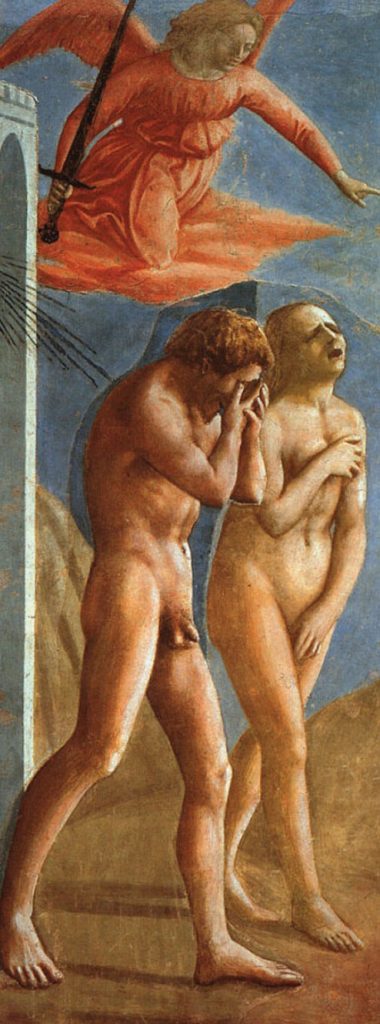
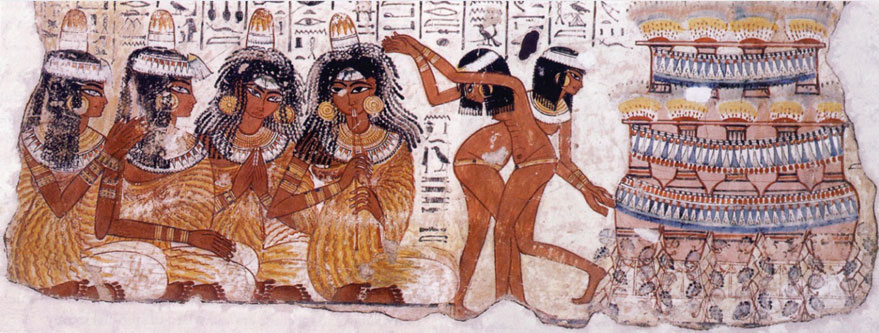
Painting on plaster, whether it is dry or wet, is one of the earliest painting techniques. One of the earliest found frescos are in the Palace of Knossos, in Crete, Grece. The Fresco of the Dolphins dates back to 1700 BC, only 3700 years ago!
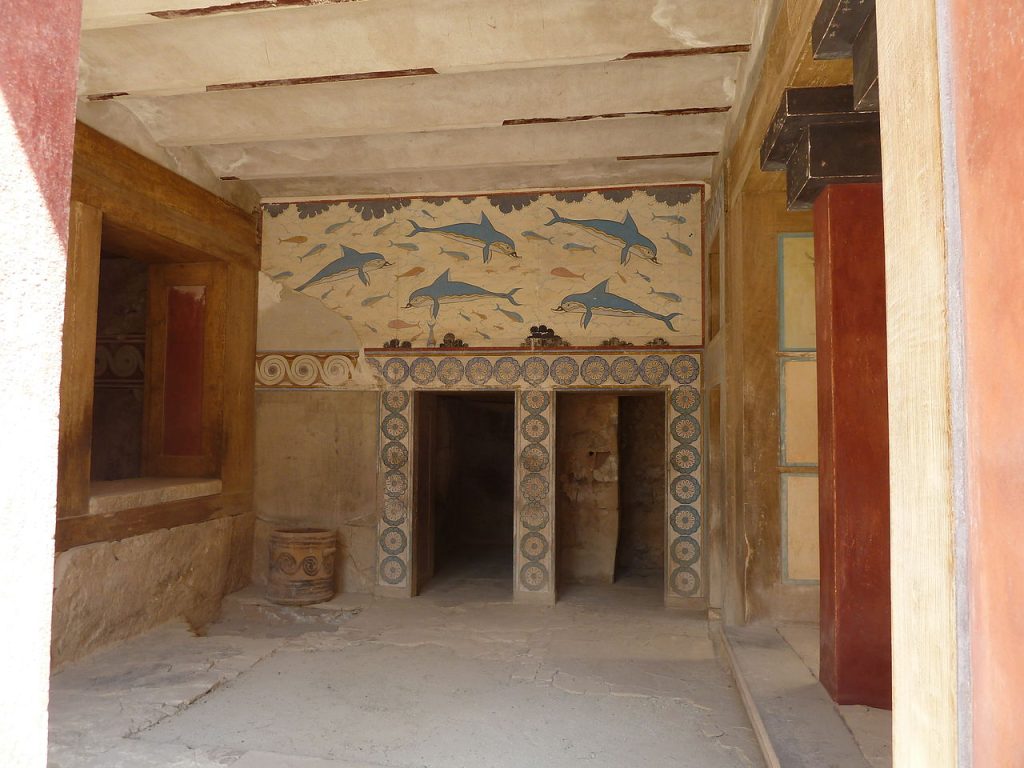
Frescoes are the source of some of the most striking imagery handed down to us from the Minoan civilization of Bronze Age Crete (2000-1500 BCE).
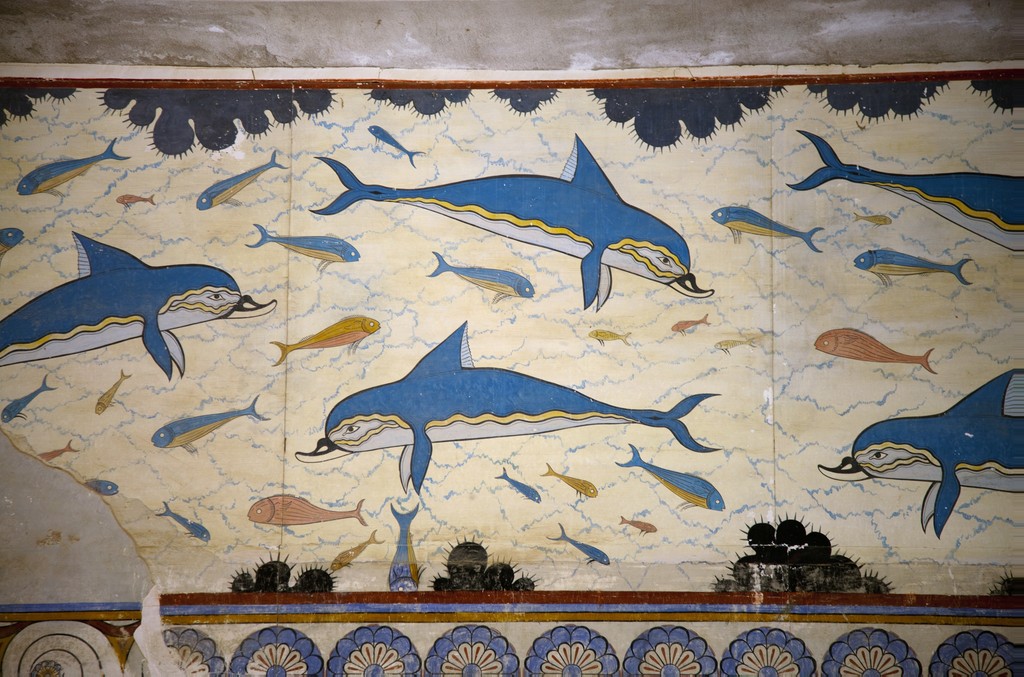
This article in Ancient History Times will give you some insight and more images about the ancient Minoan Frescoes: Ancient History: Minoan Frescoes
There are two types of fresco techniques. “fresco secco” is pigment and water brushed on dry plaster. “Buon fresco,” which means “good fresco” in Italian, is pigment and water brushed onto wet plaster.
Video
To find out more about the chemistry involved in the fresco technique, please take a look a this video by Artrageous with Nate.
Intro to Fresco and the Science Behind it (7:42)
The Sistine Chapel
One of the most famous frescoes in the world is Michelangelo’s Sistine Chapel ceilings. In 1503, and almost against his will (since he considered himself a sculptor and had never painted a fresco commission), Michelangelo was commanded by Pope Julius II to paint a series of frescoes for the ceiling of this small Papal chapel that had been built by Pope Sixtus IV (Julius’ uncle), known as the Sistine Chapel. Initially, it was to be the simple representation of the 12 apostles, but Michelangelo took it way beyond what was expected, giving us a complex iconography of biblical scenes and images inspired by the Book of Genesis. He worked for four years with four assistants, working 27 feet above the floor, on makeshift scaffolding, and standing most of the time. It was so physically taxing that it permanently damaged his eyesight. In the end, he gave us this spectacular series of frescoes, more than 300 figures in an area of about 131 ft by 43 ft wide, a total of 5,000 square feet in four years.
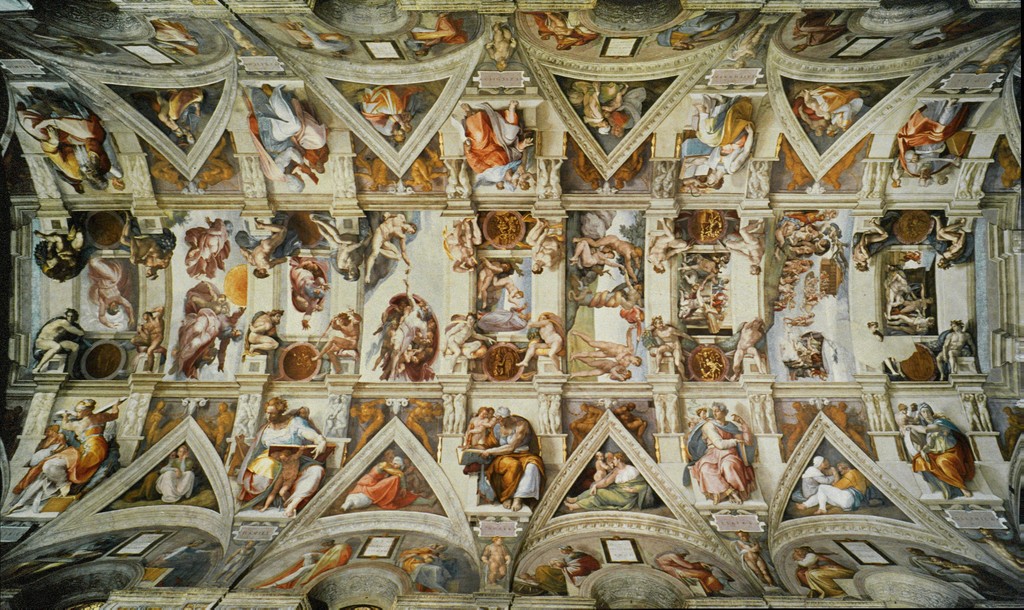
How intense was this project? This great video by Artrageous with Nate will give you an idea:
Video
Do You Know why the Sistine Chapel was Artrageous? (11:15)
Painting Techniques: Encaustic
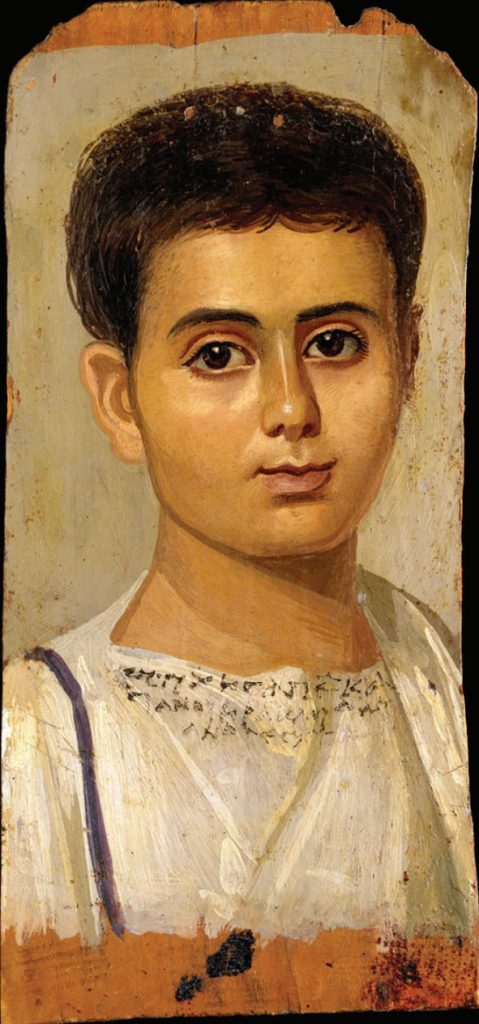
In encaustic painting, pigments are mixed with molten beeswax. The word encaustic comes from the Greek word enkausticos: “to burn.” The heated beeswax and pigment mix is then applied to a surface. Since it could easily crack, the needed support must be rigid: gessoed wood panel or canvas mounted on wood panel. The advantage of encaustic is that it remains fresh and vibrant over centuries. Encaustic paintings from ancient Egypt dating to the period of Roman occupation (late first century BCE-third century CE) are as brilliantly colored as when they were first painted (Figure 10).
Videos
Here are two short videos to give you a glimpse into the technique: How to Paint in Encaustic gives you a short overview of it, and in Dale Roberts’s Encaustic Painting Demo, you will see a contemporary artist working on the technique.
How to Paint in Encaustic (1:38)
Dale Roberts Encaustic Painting Demo (6:00)
Egyptian Mummy Portraits and Videos
Some of the oldest surviving encaustic paintings are the Egyptian Fayum mummy portraits. They are known for their beauty. Check out the Getty Museum’s Power in a Mummy Portrait and also this short video of painter Y. Z. Kami as he reflects on ancient Egyptian Fayum portraits.
Please click on the “Watch on YouTube” link in the second video to view it. The user does not allow this video to be embedded on this page.
Painting Techniques: Glair and Egg Tempera
After water and beeswax, the next painting methods make their appearance through the Middle Ages. Both relate to mixing egg with pigments, but they differ in their level of flexibility when dry.
Glair
The glair technique uses only the egg white (mostly albumin) containing proteins that bind with the pigments. Unique to the technique, once the paint dries it remains flexible. This flexibility will make it the best vehicle for painting the early Medieval books, illustrations on pages that would keep on turning as the reader moves them. These beautiful little paintings would add life and color to the prayer books thus the term “miniature illuminations”. To get a sense of the process, check out the videos below.
Videos
One of the best-known masterpieces of this technique is the Belle Heures of the Duc de Berry. A prayer book illustrated for one of the most powerful patrons of the arts in France, the Duke of Berry, by 3 young brothers: The Limbourgh Brothers. In 2010, the book made a unique visit to the United States, in what will probably be the only time in its history. See the show that took place at the Metropolitan Museum of Art called The Art of Illumination: The Limbourg Brothers and the Belles Heures of Jean de France, Duc de Berry in the video below.
Making Manuscripts (6:19)
The Art of Illumination: The Limbourg Brothers and the Belles Heures of Jean de France, Duc de Berry (11:08)
Egg Tempera
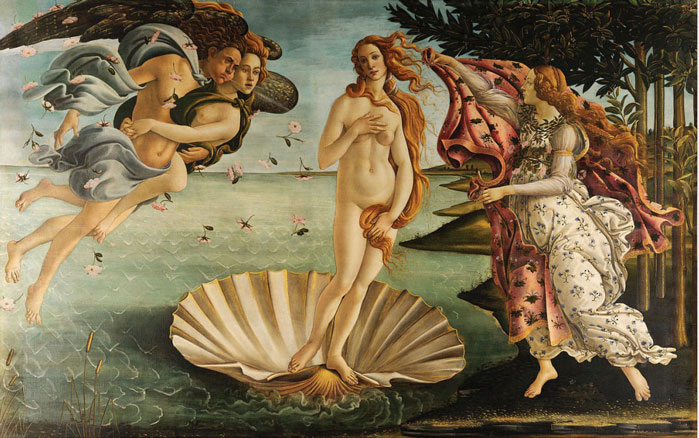
Unlike in glair, the other technique mixes the egg yolk (fat) with pigments. This technique is known as egg tempera. Egg has probably been used as a binder for pigments since antiquity: its use has been identified on some Roman Faiyum portraits, and it was, and remains, the principal paint medium for the icons of the Greek and Russian Orthodox churches. In Western painting, the technique is particularly associated with Italian panel paintings from the 13th to the 15th centuries, although the medium was widely used throughout Europe.
Egg tempera is a difficult medium to master because the egg yolk mixture dries very quickly, and mistakes cannot be corrected without damaging the surface of the painting. The Birth of Venus by Sandro Botticelli (1445-1510, Italy) is an egg tempera painting (Figure 11).
Video
Dr. Beth Harris and Dr. Steven Zucker discuss Tempera paint in this Smarthistory video and give an in-depth look at this method and its original purpose.
Tempera Paint (11:47)
Painting Techniques: Oil
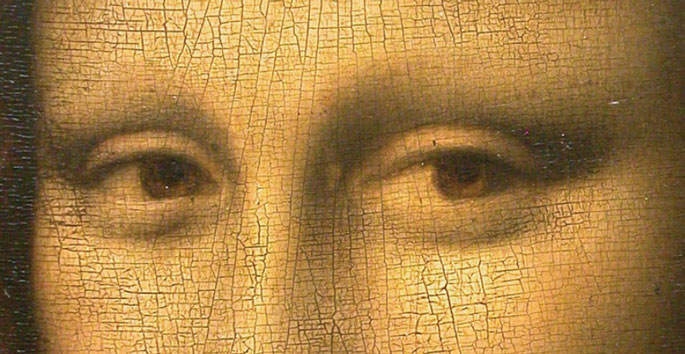
Oil painting was discovered in the fifteenth century and uses vegetable oils, primarily linseed oil and walnut oil, as the binding agent. Linseed oil was chosen for its clear color and its ability to dry slowly and evenly. Turpentine is generally used as the solvent in oil painting. The medium has strict rules of application to avoid cracking or delamination (dividing into layers). Additionally, oil paint can oxidize and darken or yellow over time if not properly crafted. Some pigments have been found to be fugitive, meaning they lose their color over time, especially when exposed to direct sunlight. This can be seen in a detail of Leonardo’s Mona Lisa where the figure’s eyebrows and eye lashes are now “missing” (Figure 12).
Oil painting is a historical favorite. Paint is created by the mixture of pigment with an oil binder, often linseed oil. The MOMA video below shows how.
It is not known how oil painting was first developed, but in Western Europe, there are indications of its use from at least the 12th century, and it was widely used from the Renaissance. The viscous oil is thinned during the painting process with a solvent, usually turpentine. Oil painting is commonly associated with canvas (flexible) supports and wood panel (rigid) as well.
Artists often manipulate the viscosity of oil paints to create different painting effects. A glaze is often made by mixing a large amount of medium with pigments, creating a see-through veil of color, and usually laid out to alter color intensity and sense of space.
Videos
Paint | ART TERMS IN ACTION (1.5 minutes)
Viscosity | ART TERMS IN ACTION (1 minute)
Indirect and Classical Methods
There are two main methods of oil painting techniques, the indirect, or classical, method and the direct, or alla prima, method. In the indirect method, an artist will work on an underdrawing, an underpainting or grisaille, and the final glazed painting, all 3 stages for the same work.
In a direct or alla prima (“all at once” in Italian) technique, the artist does not use an underdrawing or underpainting; all that will be painted goes onto the canvas at once. The look of both techniques is very different. One will have a more studied look, while the other enjoys fast painting and usually visible brush strokes.
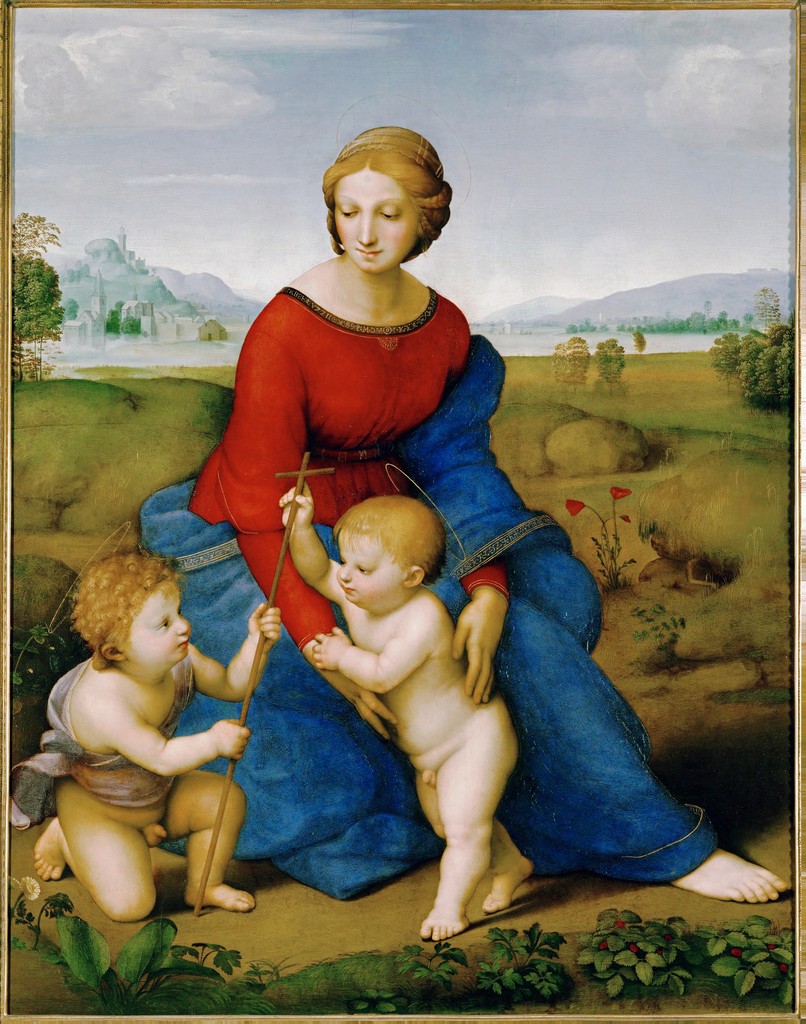

This article Why Classical and Contemporary Paintings Look So Different (by Gamblin Colors) will give you some good insight into their more profound differences.
Painting Techniques: Acrylic
Acrylic painting is relatively modern and uses water-soluble acrylic polymer as the binding agent. Water is the solvent. Acrylic dries very quickly and can be used to build up thick layers of paint in a short time. One problem with acrylic is that the colors can subtly change as it dries, making this medium less suitable for portraiture or other projects where accurate color is vital. Nevertheless, acrylic paint is preferred over oil paint by many artists today, in part due to its greater ease of use and clean up, and because its rapid drying time allows the artist to work at a faster pace.
In acrylics, pigments are mixed with a synthetic polymer emulsion. The solvent used is water, as acrylics are water soluble when wet, but become waterproof after they dry. Invented around 1949 by Leonard Bocour and Sam Golden, the original acrylics were commercially available in the 1950s. Unlike oils, acrylics are fast drying. Special substances can be added to retard the drying speed of the paint. In 1936, David Alfaro Siqueiros held an experimental workshop in New York City, where artists, among them Jackson Pollock, experimented with the latest synthetics and paints, trying new methods of application such as spray guns. Acrylics were also used in the 1950s by Morris Louis, Helen Frankenthaler and later by Roy Lichtenstein. They were also used extensively by Mark Rothko, who employed them to originate a form of color field painting that strongly resembled the effect of watercolor stain.
Because of their drying speed and ease of cleaning, they remain one of the most popular modern painting techniques.
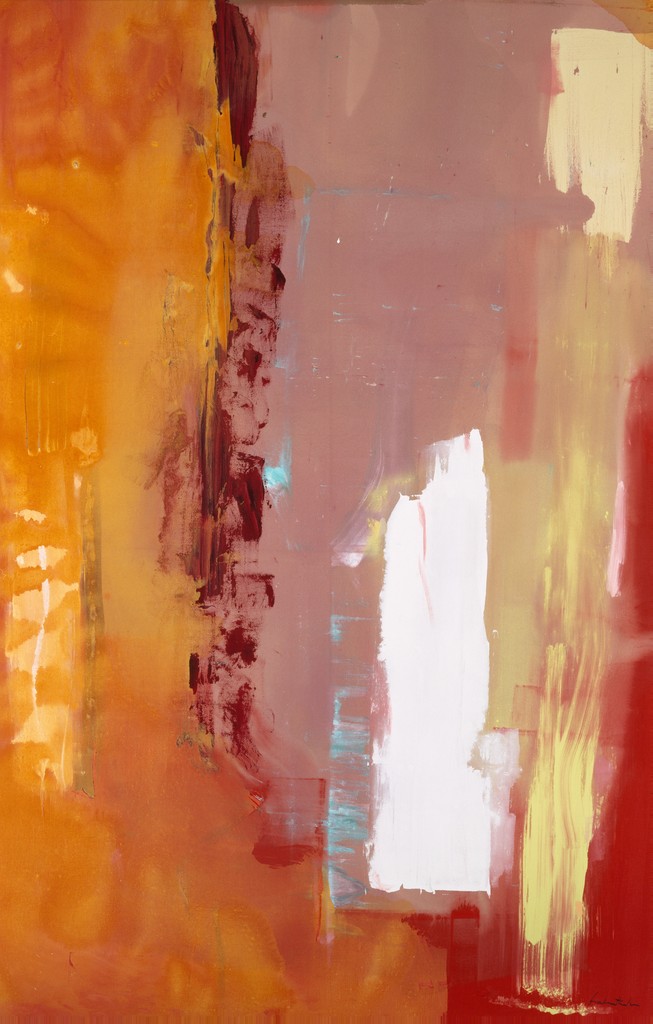
Media Attributions
- Figure 1. Mona Lisa (Artist: Leonardo da Vinci; Author: User “Dcoetzee”; Source: Wikimedia Commons) is licensed under a Public Domain license
- Figure 2. Paul Gaugin, Cattle and Peasant Woman in a Landscape. Watercolor, gouache, gesso on cardboard, ca. 1889-1890 (Image source: University of California, San Diego, via Artstor. Used with permission, for education use only)
- Figure 3. The Sponge Diver (Artist: Winslow Homer; Author: User “Botaurus”; Source: Wikimedia Commons) is licensed under a Public Domain license
- Figure 4. George Duchesne, Cycling Race. Watercolor, 1902 (Image source: Réunion des Musées Nationaux / Art Resource, N.Y. via Artstor. Used with permission, for education use only).
- Figure 5. The Expulsion of Adam and Eve from Eden (Artist: Masaccio; Source: Wikimedia Commons) is licensed under a Public Domain license
- Figure 6. Nebamun Tomb Fresco Dancers and Musicians (Author: User “Fordmadoxfraud”; Source: Wikimedia Commons) is licensed under a Public Domain license
- Figure 7. Inside the ancient Minoan Palace of Knossos (1700 BC) – Crete, Greece (Image source: User, G Da, Wikimedia Commons) is licensed under a CC BY-SA (Attribution ShareAlike) license
- Figure 8. Minoan Palace, Queen’s Megaron. Detail view of Dolphins, built around 1900 BC. (Knossos, Greece, Crete Island; Image source: by Shmuel Magal, Sites and Photos, via Artstor. Used with permission, for education use only)
- Figure 9. Michelangelo, Sistine Chapel: ceiling frescoes. (Vatican Palace, Vatican City; Image source: Erich Lessing Culture and Fine Arts Archives/ART RESOURCE, N.Y. via Artstor. Used with permission, for education use only)
- Figure 10. Portrait of the Boy Eutyches (Source: Met Museum; License: OASC).
- Figure 11. The Birth of Venus (Artist: Sandro Botticelli; Author: User “Dcoetzee”; Source: Wikimedia Commons) is licensed under a Public Domain license
- Figure 12. Detail of the eyes of Mona Lisa (Artist: Leonardo da Vinci; Author: User “Cantus”; Source: Wikimedia Commons) is licensed under a Public Domain license
- Figure 13. Example of Indirect painting. Raphael, Madonna del Prato (Madonna and Child with the Young St. John). Oil on poplar panel, ca. 1505 (Image source: Erich Lessing/ART RESOURCE, N.Y. via Artstor. Used with permission, for education use only).
- Figure 14. Example of Alla Prima painting. Rembrandt, Portrait of Jan Six. Oil on canvas, 1654 (Image source: University of California, San Diego via Artstor. Used with permission, for education use only).
- Figure 15. Helen Frankenthaler, Prometheus. Acrylic on canvas, 1976 (Image source: Museum of Fine Arts Houston via Artstor. Used with permission, for education use only).
Candela Citations
- The Language of Design (Art, Design, and Visual Thinking). Authored by: Charlotte Jirousek. Provided by: Cornell University. Retrieved from: http://char.txa.cornell.edu/language/introlan.htm. License: All Rights Reserved
- Some Ideas About Composition and Design, Elements, Principles, and Visual Elements. Authored by: Marvin Bartel. Provided by: Goshen College. Retrieved from: https://www.goshen.edu/art/ed/Compose.htm#principles. License: All Rights Reserved
- Elements of Art. Provided by: The J. Paul Getty Museum. Retrieved from: https://www.getty.edu/education/teachers/building_lessons/formal_analysis.html. License: All Rights Reserved
- Question: What is optical blending?. Provided by: The SVGA Blog. Retrieved from: https://sgvarts.blogspot.com/2012/09/question-what-is-optical-blending.html. License: All Rights Reserved

